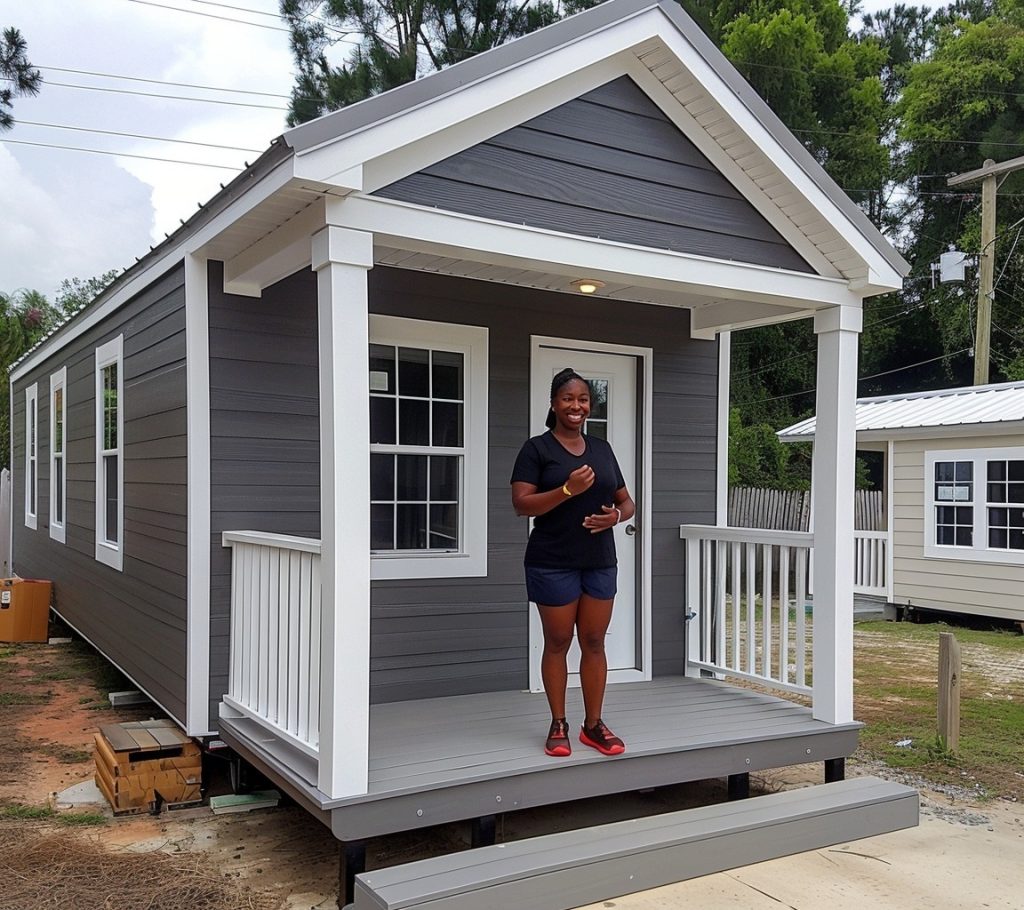n 2020, I built a tiny home in the backyard of my 1,400-square-foot house in Atlanta, Georgia for about $35,000.
Today, it’s my primary residence, and I live in it for $0; my mortgage, property taxes and utility bills are covered by rent I collect from renting out my main home.
The house is only 296 square feet, but it’s efficiently designed. A lot of the time, I forget I’m living in a shed.
Tiny homes are just beginning to gain traction in the U.S., but the process isn’t as straightforward as it should be. Here’s my advice on how to build your own backyard tiny home:
1. Check your local zoning.
Although some major cities are easing regulations on tiny homes to encourage more housing supply, many still restrict what you can and cannot do with your land.
You can typically find the zoning codes for your property address through your city’s local zoning map. Do a quick Google search with your city’s name and the terms “zoning map” or “zoning office.”
If nothing comes up, call your city’s building and planning department.

Your zone will determine whether or not tiny homes are permitted, as well as how big your lot needs to be in order to build one, and the maximum size of the structure.
2. Consider your financing options.
Instead of a bank loan, I cashed out $8,500 in stocks and put about $20,000 on my credit cards to pay for everything. This allowed me to get cash back.
But if you need financial assistance, there are many other options:
- A home equity line of credit (HELOC) lets you borrow against the available equity in your home, and the house is used as collateral for the line of credit.
- A home equity loan gives you a lump sum payment with a fixed (but usually higher) interest rate.
- Cash-out refinancing replaces your existing mortgage with new terms and allows you to cash out the difference.
- A construction loan is short-term financing that can be used to cover the costs associated with building a house, from start to finish.
 Precious’ dog Sachia also lives in the tiny home with her. She plans to entertain friends in the backyard when the weather gets warmer.Photo: Jeffrey Beard for CNBC Make It
Precious’ dog Sachia also lives in the tiny home with her. She plans to entertain friends in the backyard when the weather gets warmer.Photo: Jeffrey Beard for CNBC Make ItIt may also be helpful to look into community development financial institutions, which help provide financial resources to low-income communities.
3. Pick your structure.
The most expensive but customizable option is a “stick built” — a home built from scratch. The most cost-efficient is a prefabricated unit.
 Precious used a lofted shed from Liberty Storage Solutions as the base of her tiny home.Photo: Precious Price
Precious used a lofted shed from Liberty Storage Solutions as the base of her tiny home.Photo: Precious PriceI used a shed from Liberty Storage Solutions, which eased labor costs because the structure already had windows, a door, and the foundations for lighting and electricity.
4. Determine your design needs.
Once you’ve picked a structure, you’ll need at least a site plan (which outlines your existing lot and proposed improvements) and a floor plan (the layout for the structure) to start construction.
You can find qualified architects, engineers or land surveyors online to help with this. I bought my site plan from 24h Plans for $99.
Since I used a prefabricated shed, I easily designed my own interior online (i.e., wall dimensions, where I wanted to place my work desk).
 Nestled under the sleeping loft is a small desk, which Precious uses to check emails and catch up on work.Photo: Jeffrey Beard for CNBC Make It
Nestled under the sleeping loft is a small desk, which Precious uses to check emails and catch up on work.Photo: Jeffrey Beard for CNBC Make It5. Get multiple construction bids.
A general contractor can oversee pretty much all aspects of a construction project, including drywall installation, plumbing and paint jobs.
Local home improvement stores often have a list of recommended contractors, or you can ask friends, family and neighbors.
Show your plan to multiple contractors and try to get at least five different bids. To get the most accurate estimated cost, make sure to discuss what materials you want to use (i.e., type of wood floors, cabinetry, tiles).
 The rustic barn sliding doors provide easy privacy.Photo: Jeffrey Beard for CNBC Make It
The rustic barn sliding doors provide easy privacy.Photo: Jeffrey Beard for CNBC Make ItDon’t make your decision solely on price. Ask for photos of their previous work and read the reviews online.
I didn’t use a general contractor and prematurely chose a construction team that wasn’t qualified. In hindsight, I wish I did more research. Choosing poorly cost me extra money, and it was the most frustrating part of my build.
6. Secure your return on investment.
Before moving in, I rented out my tiny home for almost two years — and grossed almost $32,000, nearly covering the cost of what I spent to build the home.
But your ROI doesn’t have to be money-related. It could be that you have have more flexibility in the form of a home office, or even a separate living space for aging parents or guests.
The goal is to have fun with designing the perfect space for your ideal lifestyle..


